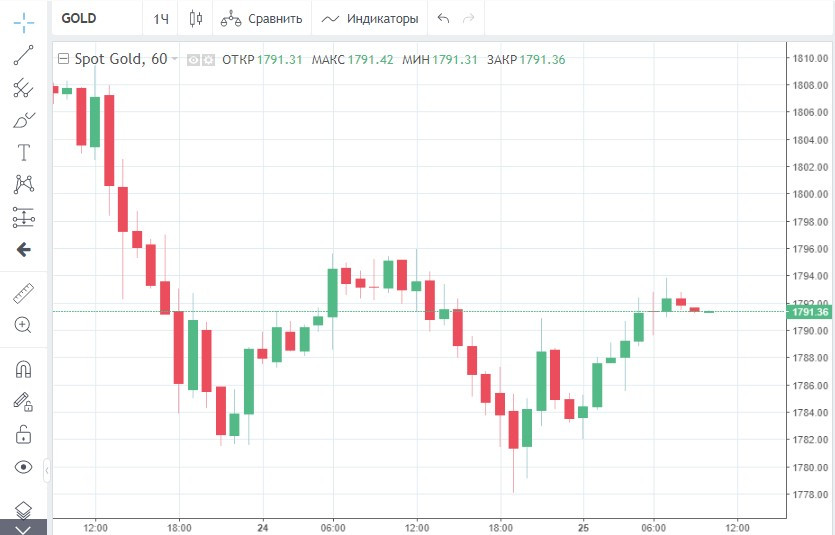
Yesterday's New York session was very busy as the US unveiled a batch of macroeconomic statistics. It triggered volatility in the gold market. As a result, gold was able to end the day with a slight increase
Today, trading is unfolding quietly as trading floors in the US are closed on the occasion of Thanksgiving Day. Prior to it, market activity was high as investors evaluated the US economic reports.
Yesterday, the US revealed the Durable Goods Orders, New Home Sales, Initial Jobless Claims reports as well as the PCE price index.
The price movement of gold had changed every time after the release of a new report. Gold faced bearish pressure following US labor market data. The report showed a significant decrease in initial jobless claims over last week. The indicator reached the lowest level since 1969.
An increase in GDP was also among the negative factors for gold. According to the results of the third quarter, the figure climbed by 2.1% in annual terms.
The published reports have shown that the economy is expanding rapidly. The US dollar gained momentum amid such news. On Wednesday, it jumped by 0.4% against its main rivals. The greenback may close the week with a weekly rise of 0.9%. As a result, it is likely to hit the highest level since the summer of 2020.
The strengthening of the US dollar is bearish for gold. This is why its growth is restrained even despite upbeat economic reports.
During yesterday's trading, gold rose slightly by less than 0.1% or 50 cents. It ended the session at $1,784.30.

On November 24, gold halted a 4-day decline, receiving support from the Personal Consumption Expenditure Index (PCE). Last month, the indicator climbed by 0.6% compared to the September reading and increased by 5.3% compared to the same period last year. It is the highest level since December 1990).
The PCE index excludes food and energy prices. It is one of the main indicators that help assess inflation risks.
Analysts draw attention to the fact that gold maintains growth amid expectations of further rise in inflation. However, the Fed is also closely monitoring changes in this index. Some economists believe that the latest data may become another alarming bell for the regulator to hike the interest rate.
Traders are expecting the first interest rate hike in June next year. At the same time, the minutes of the last FOMC meeting published on Wednesday showed that many Fed officials are ready to accelerate the reduction of the bond purchases if high inflation persists. They are sure that it will help them hike the key rate earlier than planned.
Experts predict that the prospect of an early tightening of monetary policy will adversely affect gold.
Earlier this week, gold fell below the psychologically important level of $1,800 following the news of the re-nomination of Jerome Powell as Fed Chair. Some analysts fear a more aggressive monetary policy tightening.
On Monday, gold declined by 2.4%. On Tuesday, it shed 1.2%, reaching a 3-week low. Importantly, last week, its price soared to a 5-month high of $1,870.20.
Bulls are weak this week. They need to exhibit strength as soon as possible in order to avoid a considerable short-term correction in the gold market, analyst Jim Vykoff pointed out.





















